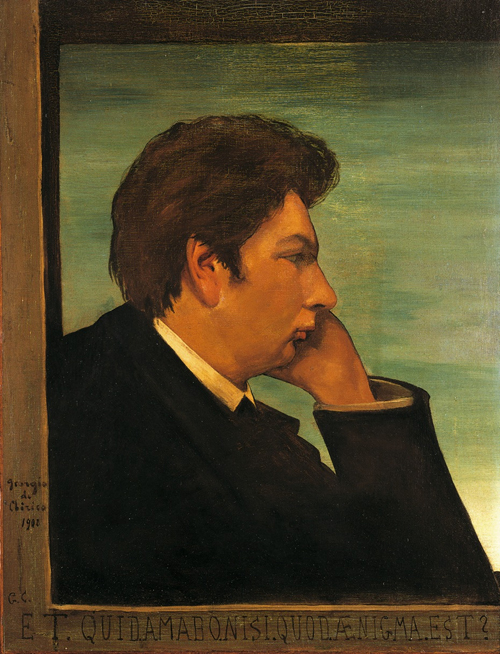Despite having touched upon many of the ingredients that make up this chronological mystery the enigma associated with them still remains intact. How was it possible for a twentieth century artist to intuitively reinvent the tragic-style in a contemporary context, and in such a way as to mirror the ancient classical concept of the false-door or pictorial tomb façade? What enabled De Chirico to reinvent this lost art form with all its implications still intact and to relocate within twentieth century art the ancient gateway to the temple of immortality, made visual through one of the most ancient mediums – the medium of paint.
In the last few chapters of his novel Hebdomeros, published in 1925, De Chirico fuses together the image of Hebdomeros’s father, and by implication his own father, with the concept of spiritual immortality...“ All at once, Hebdomeros saw this woman had his father’s eyes; and he understood. She spoke of immortality, in the great starless night. “Oh Hebdomeros”, she said, “I am Immortality. Names have their gender, or rather their sex, as you once said with much finesse, and verbs, alas, are declined. Have you ever thought of my death? Have you ever thought about the death of my death? Have you ever thought about my life? ”

Self-portrait, 1911,"Et quid amabo nisi quod aenigma est?" (What shall I love if not the enigma?)